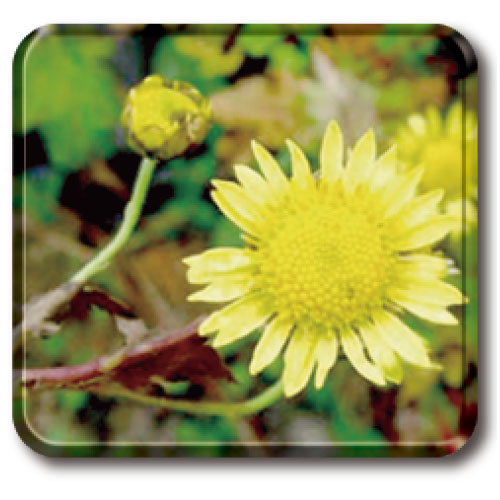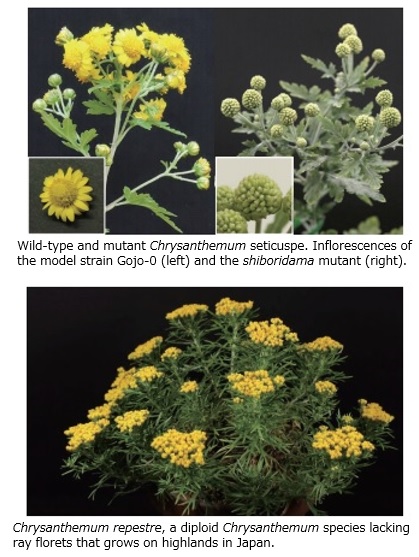

- Core Center:Laboratory of Plant Chromosome and Gene stock, Graduate School of Integrated Sciences for life, Hiroshima University
- Principal Investigator:Makoto Kusaba
- FAX:+81-82-424-0738
- Sub-Core Center 1: Agriculture Unit, Natural Sciences Cluster, Research and Education Faculty, Kochi Unversity
概要Overview
 The Chrysanthemum genus, including cultivated chrysanthemum, has interesting characteristics that model plants do not have. However, the majority of the Chrysanthemum species are autopolyploid and self-incompatible, which makes genetic analysis difficult. NBRP facilities contribute to molecular genetic studies of the Chrysanthemum genus by offering a variety of interesting Chrysanthemum species and developing unique resources based on a pure line of Chrysanthemum seticupse, a diploid wild chrysanthemum, whose whole genome sequence information is available.
The Chrysanthemum genus, including cultivated chrysanthemum, has interesting characteristics that model plants do not have. However, the majority of the Chrysanthemum species are autopolyploid and self-incompatible, which makes genetic analysis difficult. NBRP facilities contribute to molecular genetic studies of the Chrysanthemum genus by offering a variety of interesting Chrysanthemum species and developing unique resources based on a pure line of Chrysanthemum seticupse, a diploid wild chrysanthemum, whose whole genome sequence information is available.
Stock
・Wild strains of Chrysanthemum sensu lato (Anthemideae) mostly native to Japan: about 500 strains
・Experimental lines including the model strain, mutants, and interspecific hybrid lines: about 100 strains
・A BAC library of Chrysanthemum seticuspe: about 100,000 clones
Subjects in the NBRP programs related to “Chrysanthemum”
【 Value addition subprogram/ Genome Information Upgrading Program 】
| FY2018 | Whole genome sequencing of the model strain for the genus Chrysanthemum using long read sequencing technology (in Japanese) |
